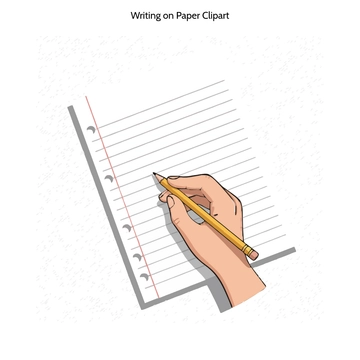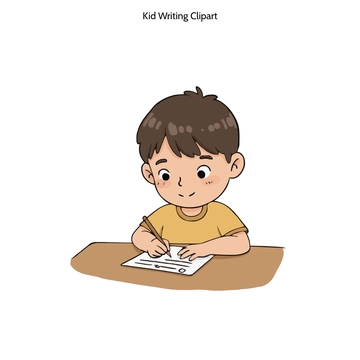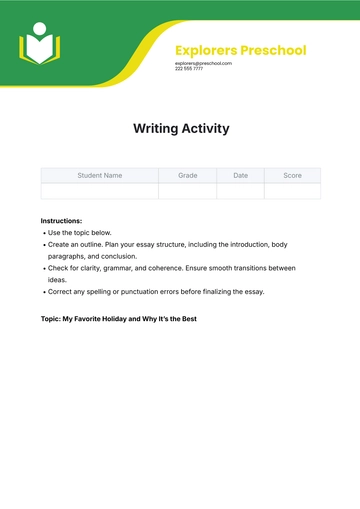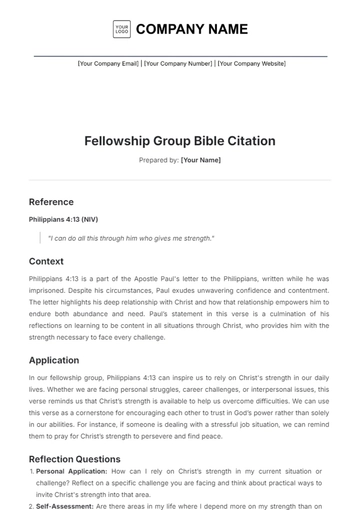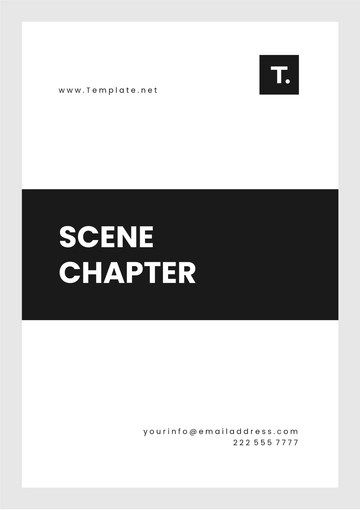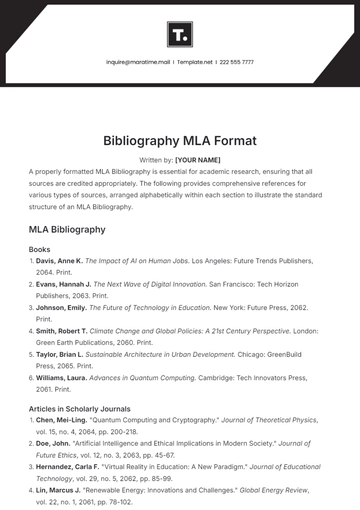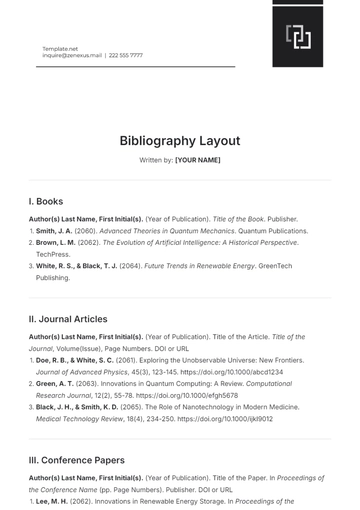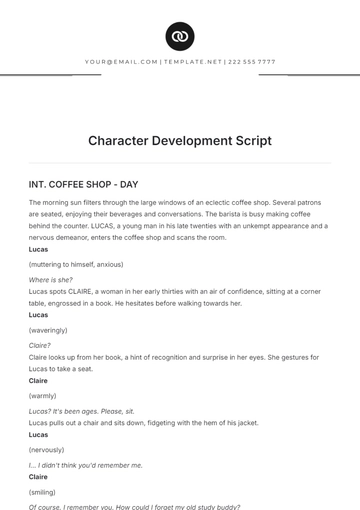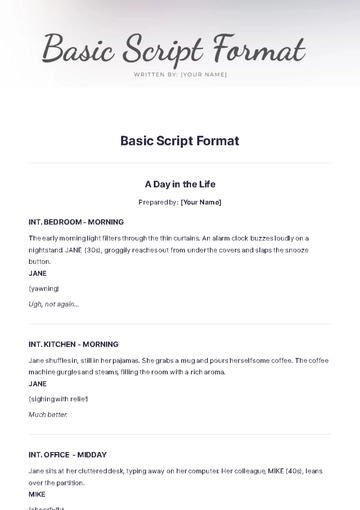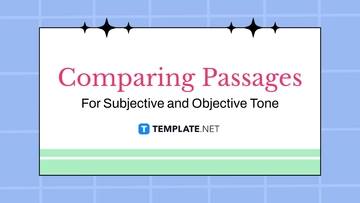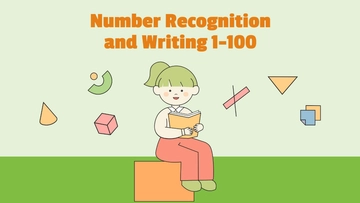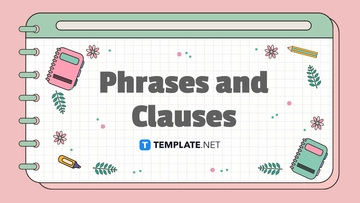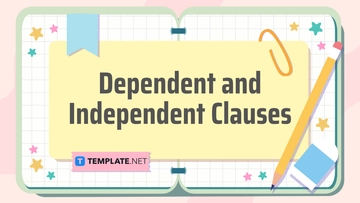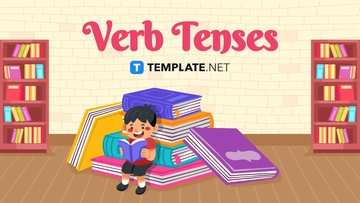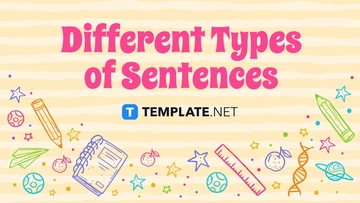Free Script Writing For Kids

Created by [YOUR NAME]
Email: [YOUR COMPANY EMAIL]
Phone: [YOUR COMPANY NUMBER]
Website: [YOUR COMPANY WEBSITE]
I. Introduction to Script Writing
Welcome to the exciting world of script writing! Designed by [YOUR NAME] from [YOUR COMPANY NAME], this template is a beginner-friendly guide to help children unleash their creative potential. Script writing is not just about creating stories but also learning the art of expression through dialogue and action. Use this template to start your journey in script writing!
Before beginning, understand that a script is a way to tell a story visually. The key elements include characters, dialogue, and directions for actors and directors. This guide will help you structure your ideas and bring your stories to life on stage or screen.
II. Understanding Script Elements
In every script, certain elements are crucial for crafting a compelling narrative. Here’s what you need to focus on:
Characters: They are the heart of your story. Describe their personalities, habits, and relationships.
Setting: This describes where and when your story takes place.
Dialogue: These are the words your characters will speak. It’s important to give each character a unique voice.
Stage Directions: These instructions tell actors how to move or react in certain scenes and help the director visualize the action.
Remember, clarity in writing your elements means a clearer vision on stage or screen!
III. Script Format Basics
To ensure your script is easy to read and professional, it is essential to follow a standard formatting guideline. Here’s a simplified structure:
Title Page: Here, you will write the title of your play, your name, and contact information. It should include [YOUR COMPANY NAME], [YOUR COMPANY ADDRESS], [YOUR COMPANY EMAIL], and [YOUR COMPANY NUMBER].
Header: Include the page number, title of your script, and your email or phone number in the header of each page.
Character List: Right at the beginning, list all characters involved in your script with a small description of each.
Scenes: Start each scene on a new page and label it with the location and time of day.
Action: Describe what happens and how characters interact with their environment.
Dialogue: Center dialogue on the page and always include the character’s name above their lines.
These formatting tips will create a clean, presentable script that any director or actor can follow easily.
IV. Crafting a Simple Scene
Let’s put the basics into practice. Here’s a simple template for a generic scene to help you understand how to build your script.
Element | Description |
|---|---|
Scene 1 | Location: Classroom |
Scene 2 | Location: Schoolyard |
This structured approach helps visualize scenes and is a great starting point for your script. Adjust the template to suit your story's needs.
V. Tips for Writing Dialogue
Writing natural-sounding dialogue can be challenging. Here are a few tips to keep in mind:
Avoid long speeches and try to keep dialogue short and realistic.
Use contractions like don’t, can’t, won’t—it makes dialogue sound more conversational.
Let your character's personality shine through their words; each one should have a distinct voice.
Remember, dialogue is not just about what is being said but also about what is left unsaid. Sometimes, pauses and reactions can be as powerful as words.
VI. Conclusion
Script writing is an engaging way for kids to develop their storytelling skills. By understanding the structure and elements of a script, young writers can effectively bring their stories to life. Use this template as a starting point to explore creative ideas and develop unique narratives. Happy writing!
For more resources and examples, visit our website at [YOUR COMPANY WEBSITE]. Stay creative and keep exploring the magical world of storytelling through scripts!
- 100% Customizable, free editor
- Access 1 Million+ Templates, photo’s & graphics
- Download or share as a template
- Click and replace photos, graphics, text, backgrounds
- Resize, crop, AI write & more
- Access advanced editor
Introducing Script Writing For Kids Template from Template.net! Crafted for budding storytellers, it offers an editable canvas to spark creativity. Customizable prompts ignite imagination while being easily editable in our Ai Editor Tool. Empower young minds to script their adventures with this dynamic resource. Let the storytelling begin


